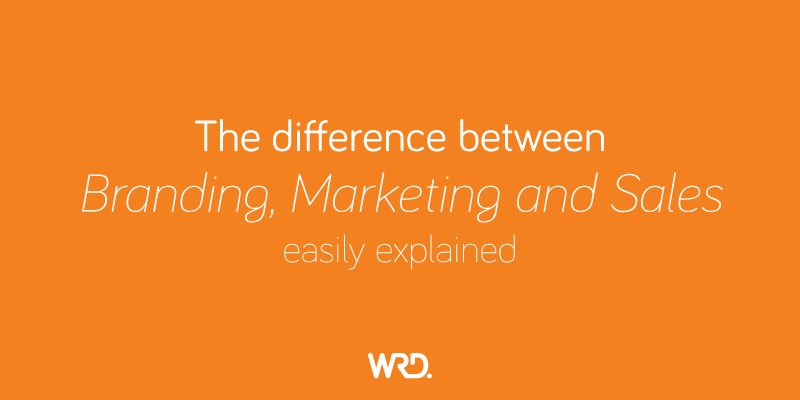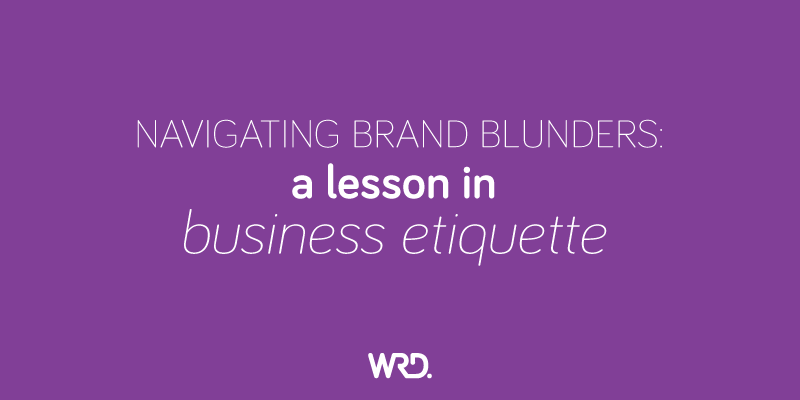When it comes to running a business, there are three pillars that all businesses must understand and implement in order to develop and thrive: branding, marketing, and sales. They individually serve a unique role, but when combined, they comprise a formidable strategy that may propel an organisation to success. The difficulty is that most people are unaware of the distinctions between them, so let’s clear the air and share 6 recommendations on how to successfully integrate these activities to help your business thrive.
Understanding the core differences between branding, marketing and sales
Before we get started on integration, let’s first examine the fundamental differences between branding, marketing, and sales.
Branding: Your Reputation
Branding is really about your company’s reputation. This is what you become recognised for. It is what others say about you. Understanding that your brand is more than just a logo or a memorable tagline is a great place to start. In fact, when you understand that you brand covers your brand personality, language and tone, how you seem (logo, colours, fonts, images), how you treat others (including your culture), and your brand experience, you begin to realise how important a well crafted brand is for your business. Think of branding as your company’s soul – a distinct fingerprint that distinguishes you from competition. Branding is about establishing an emotional connection with your target audience, generating trust, and cultivating loyalty.
Marketing: Spreading the Message
Marketing is the engine that drives your brand forward, sharing your message to a large audience where you communicate with new audiences. It encompasses a vast array of strategies and tactics, however, understanding who you want as a perfect customer goes beyond the demographics and geographics that have been used in the past. Marketing that considers your brand will look at the psychographics of your audience to ensure the message you are sending truly connects and resonates with your audience. Marketing in the modern age should be a diverse mixture of activities that include content marketing for social media campaigns, digital marketing, blogging, podcast and email newsletters, to name a few. There is also print marketing materials such as brochures, catalogues, direct mail, newspaper advertising, bill boards, vehicle signage etc. If you have the budget you can also engage in radio or television advertising. Marketing is all about creating meaningful interactions with your audience, educating them about your products or services, and nurturing them along the customer journey. It’s about generating awareness, sparking interest, and ultimately driving action.
Sales: Closing the Deal
While branding and marketing lay the groundwork, sales is where the rubber hits the road. Most people find this to be the ‘ice’ part of doing business, however a well trained sales person understands that this final piece in the puzzle is where they get to help the potential client solve a problem. Sales may be seen the art of turning leads into loyal customers, closing deals, and driving revenue, however it is also the final opportunity to demonstrate how you can help them. Sales is about building relationships, understanding your customers’ needs, and providing solutions that meet those needs. Whether it’s through face-to-face meetings, phone calls, or online transactions, sales is the final and vitally important part of the customer journey from prospect to client and then onto being a raving fan.
The 5 Key’s to successfully integrating branding, marketing and sales
Now that we’ve defined the difference between branding, marketing and sales, let’s take a look at how we can seamlessly integrating all of these three strategies into your business.
1. Consistency is Key
One of the most critical (and dare we say, hardest) aspects of integration is consistency. Your branding, marketing, and sales efforts should all work together in harmony, sharing a cohesive message and brand experience across every touchpoint. From your website and social media channels to the way to answer your phone or reply to emails through to your sales presentations and customer interactions, consistency breeds familiarity and trust, reinforcing your brand identity and positioning in the minds of your audience.
2. Aligning Goals and Objectives
To achieve seamless integration, it’s essential to align the goals and objectives of your branding, marketing, and sales efforts. Each strategy should be working toward the same overarching objectives, whether it’s increasing brand awareness, driving lead generation, or boosting sales revenue. By aligning your efforts, you create momentum and consistency, maximising the impact of your combined efforts.
3. Leveraging Data and Analytics
In today’s data-driven world, insights are key to success. By regularly analysing and leveraging data and analytics across your branding, marketing, and sales efforts, you gain valuable insights into customer behaviour, their preferences, and what is trending. This allows you to refine your strategies, tweak your campaigns, and personalise your interactions, ensuring that every touchpoint is tailored to the needs and desires of your audience.
4. Building Memorable Customer Journeys
Integration isn’t just about aligning your internal processes; it’s also about creating memorable and seamless experiences for your customers. By mapping out your customer journey and identifying key touch points (website, free lead magnets, phone, email, face to face, social media, podcasts, blogs, expos – to name a few), you can ensure that your branding, marketing, and sales efforts are seamlessly integrated at every stage. Think about ways that are on brand that give you an opportunity to surprise and delight your customers. From the initial awareness of your brand through to the final purchase decision and beyond – yes! Beyond. Remember that repeat business is one of the best ways to build brand loyalty which means that every interaction should be cohesive, compelling, and designed to engage the customer.
5. Embracing Innovation
Embracing technology and being innovating is essential for any business these days to succeed. Sadly, those that are not prepared to embrace it will eventually be left behind. We see this most recently with AI tools popping up on a daily basis. These may feel scary at first, but once you realise that they can do a fair bit of heavy lifting for your business, you can become more productive if you understand how to use them correctly. Does this mean that technology will replace actual humans? No, I don’t believe they will, as people still want to deal with people. However by embracing new technologies, not only will you stay ahead of the curve and ensure that your branding, marketing, and sales remain relevant and effective, you will also find ways to be quicker and more efficient. Whether it’s experimenting with chatbots to make for quicker customer response times, exploring virtual experiences for customers who cannot see you in-person, or embracing the latest trends on social media, innovation will keep your business agile and adaptable which will be a key to the success of businesses today.
To successfully integrate your branding, marketing and sales into your business means that you need to ensure that everyone in your business intimately understands what your brand should stand for, how you want it to be perceived and what you want people to say about it. Everything stems from understanding these foundations. If you can get this piece right- your marketing and sales strategies will seamlessly fall into place and help to build your business with a cohesive strategy rather than each pillar behaving like a silo in the business. The ultimate goal is to grow your business by increasing awareness, fostering loyalty, and of course to make sales.




